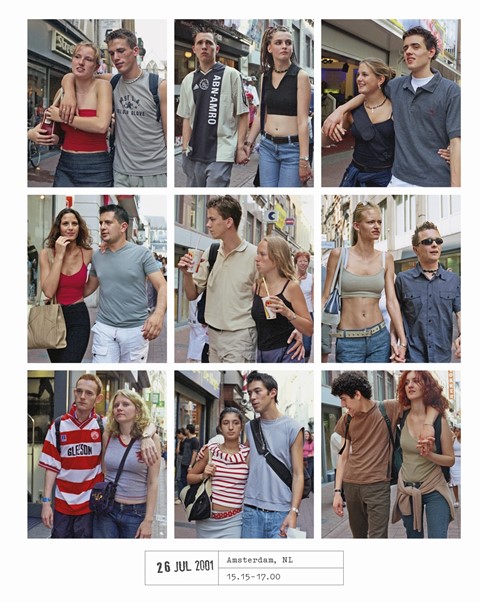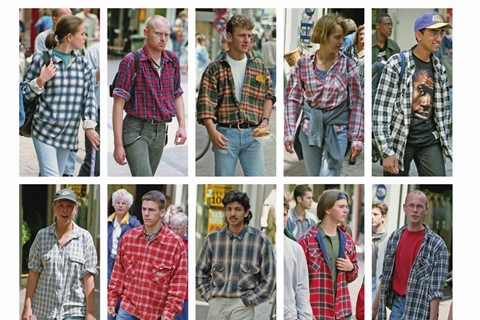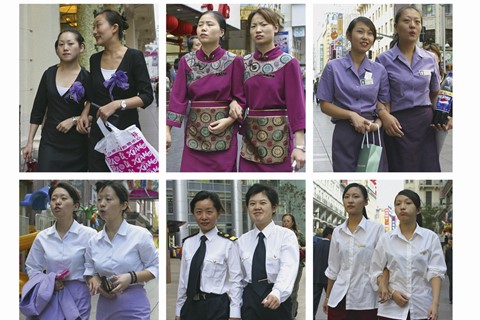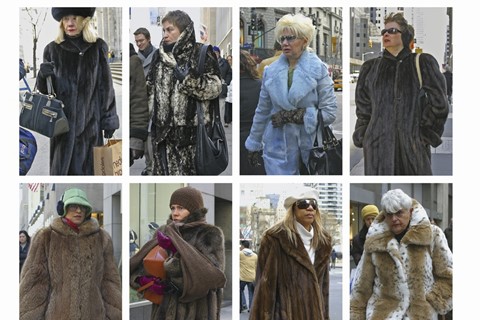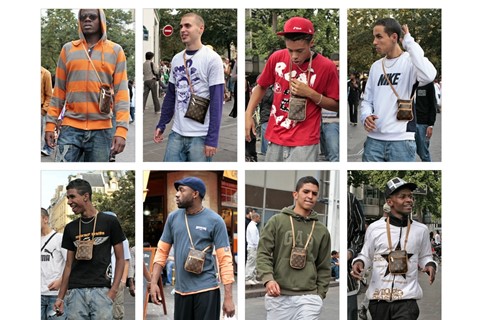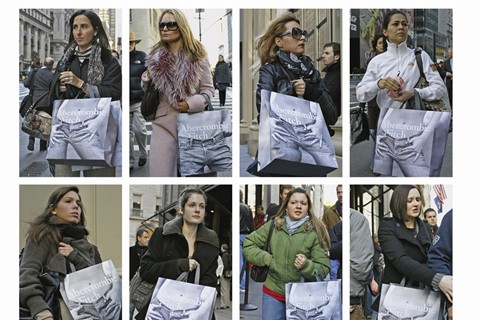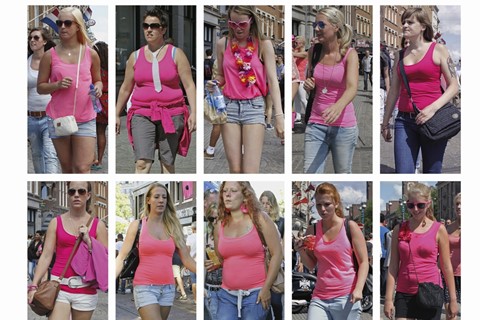Humanity in all its unoriginal glory is laid out in the fascinating work of Hans Eijkebloom
The unexceptional is what fascinates Dutch photographer Hans Eijkebloom. Over the past forty years he has taken thousands of photos of people on the street, his camera slung around his neck and shutter hidden in his pocket. Before this, for an early series, he asked women to describe their ideal man, and then fashioned himself in self-portraits to fit the descriptions. In another series, he appeared in the background of ten newspaper stories across ten days, whether at accident scenes or other press-worthy events. Since the 1970s he has taken the lens off himself and focused it instead on other people, and in so doing has created nothing short of an anthropological record of contemporary life, culminating in his current project, People of the Twenty-first Century. Using repetition to show difference, he has snapped hundreds of photos a month from 1992 to 2013, now amassed in the newly published volume.
The title is a reference to the great series of portraits published by August Sander in the early 1920s, People of the Twentieth-Century, which shows various individuals at their work or in domestic situations. Eijkelboom says, “It was the decision of the publishers to reference that beautiful work. At first I thought it was pretentious.” But now, he says, he believes more in the title, and his snaps of ordinary people, taken in high-traffic shopping areas, offer an insight into how identity has been fashioned over the past twenty years. Here he shares his thoughts on identity, the digital human and sandals.

On identity...
“I started taking photos because I was interested in identity and my place in society. So all my work in the earlier years, in the 1950s, is about that. When I was 15 years old I moved from one city to another one, and when I was 25 I asked a friend to interview people from the first city – who I’m sure didn’t know anything about what had happened to me in the last ten years – about what they think I’m doing now and what kind of person I am. Then I made photos of myself in the clothing or the situation the people described. I discovered that you exist in the minds of people around you on the basis of very small things they know about you, and then, from that detail, they create a whole story. After some years, I became more interested in society as a whole."
On choosing cities...
"My book of street photography, Paris-New York-Shanghai, is based in those cities, because I thought, Paris is the capital of the old world, New York is the capital of the new world and Shanghai is the capital of the future. But at the moment it’s impossible to work in certain cities, for example in Amsterdam, because 80% of the people on the Dam Square are tourists, and my work is not about tourists. It’s the same problem in London on Oxford Street. At this moment I prefer to work in smaller cities. At the beginning of next year I will be doing a book and an exhibition specifically on Birmingham."
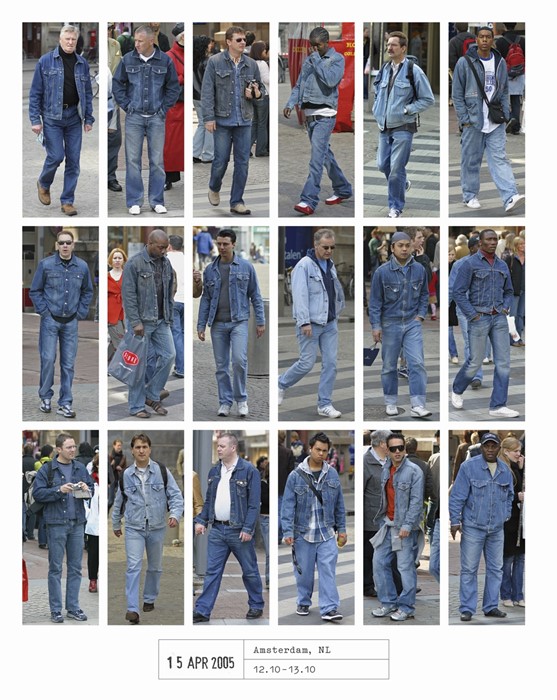
On individuality...
"Yesterday is the same as a thousand years ago. People are looking for ways to have an identity, to find the answer to the question: are you a product of the culture you live in or are you something really of yourself? That’s a general human thing. And in many ways I believe more and more that we are products of our culture – it’s naïve to think that you are really an individual. But of course a lot of consumer society sells this idea. When you look at advertising it’s always the same, they try to tell you that you’re an individual and you need some stuff to describe that individuality, but what they don’t tell you is that ten thousand others buy the same stuff to describe their individuality."
On sandals...
"People of the Twenty-First Century is a very poetic book, in my opinion, because we all try and try, and it’s nearly impossible to find our place in society, and that’s very beautiful. People always tell me that they feel close to the people in the photos. They’re not being made fun of. You feel connected to them. You are connected to them. For example, five years ago I couldn’t believe I would ever wear sandals, and then two years ago I bought sandals on holiday. I’m the same as the people in the book, also a product of the culture in which I live."
"Yesterday is the same as a thousand years ago. People are looking for ways to have an identity" — Hans Eijkebloom
On the digital human being...
"When I was young I would look for beautiful things to wear and I’d try to impress girls with my clothes. But now, I see people wearing a T-shirt with text on it that says, “I’m looking for love” or some other direct messages. Identity for young people, let’s say under 30, exists on the internet, and this influences how they try to get attention on the street as well. Over the last two years it’s become more intensive, you can see humans changing from analogue to digital."
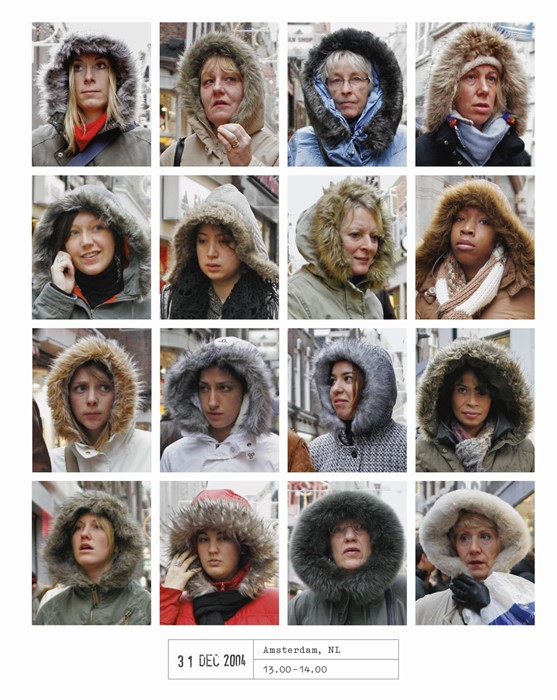
On street photography...
"It may be strange to say but I’m not that interested in street photography. 99% of it is fashion, and that’s not my thing. I am more focused on human identity, and fashion is about the fleeting moment. Most of the people who look at street photography are interested in the exceptional, and not the common. I think it’s interesting that photography has developed in this way, but I don’t feel a direct relationship with that kind of work."
On aliens...
"It was never my intention to be anthropological, but I could say about my work that if someone came from another planet and needed information about Earth, then they could look to the work of Hans Eijkelboom. It’s strange, when I started out doing photography I was doing it only for myself, and now I’ve ended up doing it for aliens."
People of the Twenty-First Century is out now, published by Phaidon.
